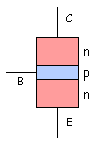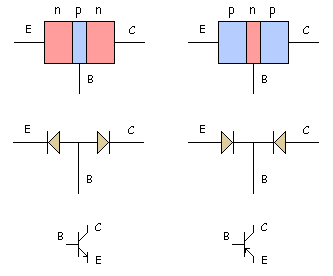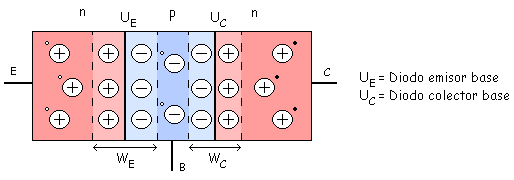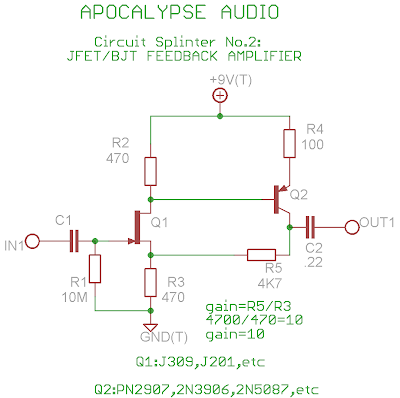Diseño de un amplificador con BJT:
- a gain of 10 a gain of 10
- 50 K Ω or higher input impedance 50 K Ω or higher input impedance
- 50 Ω or lower output impedance 50 Ω or lower output impedance
- Low freq response: 20 Hz Low Frequency response: 20 Hz
- High freq response: 100kHz. High Frequency Response: 100kHz.
Required: Required:
Design an amplifier using BJTs Design a BJT amplifier
The amplifier must-have: The amplifier must have:
- a gain of 10 a gain of 10
- 50 K Ω or higher input impedance 50 K Ω or higher input impedance
- 50 Ω or lower output impedance 50 Ω or less output impedance
- Low freq response: 20 Hz Low Frequency response: 20 Hz
- High freq response: 100kHz High Frequency Response: 100kHz
1) Use Standard Resistor Values \u200b\u200b 1) Use standard values
resistance
We are going to use two stages for the amplifier , A common emitter stage Followed by a common collector stage. We will use two-stage amplifier, a common-emitter stage followed by a common collector stage.
Assuming β = 300, Vbe = 0.7 V, Vcc = 15 V Assuming that β = 300, VBE = 0.7 V, Vcc = 15 V
Common Collector Stage common collector stage
Let Rc2 = 2.2K Ω, Re2 = 2.2K Ω, VCEQ = 7.5 V That Tc2 = 2.2 K Ω, K = 2.2 Ω RE2, = 7.5 V VCEQ
Let
R3 / / R4 = Rth = 60 Ω That R3 / / R4 = 60 Ω Rth =
Solving for R3 & R4 Solving for R3 and R4
R3 = 188K Ω, R4 = 88K = 188K Ω Ω R3, R4 = 88K Ω
Using standard resistor values \u200b\u200busing the standard values \u200b\u200bof resistance
R3 = 220K Ω, R4 = R3 = 100K 220K Ω Ω, R4 = 100K Ω
Rth (new) = 68.75K Ω Rth (new) = 68.75K Ω
The Equivalent Circuit Ac ac equivalent circuit
Rout: omitting the output resistance of the first stage Path: The omission of the output resistance of the first stage
Which is Less Than 50 Ω What is less than 50 Ω
2) Common Emitter Stage 2) common-emitter stage
This stage must-have to gain = 10, and input impedance 50KΩ ≥ This stage should have a gain = 10, and ≥ 50KΩ input impedance
A rough Approximation for the gain ≈ Rc1/Re1 An approach to gain ≈ Rc1/Re1
Let Rc1 = 10k, RE1 = 820Ω, V = 7.5 VCEQ That Rc1 = 10k, Re1 = 820Ω, V = 7.5 VCEQ
The Equivalent Circuit Ac ac equivalent circuit
We want Rin Rin ≥ ≥ 50KΩ 50KΩ We
Rin = Rth / / Rib Rin = Rth / / Rib
50K = Rth / / 258K 50K = Rth / / 258k
Solving for Solving Rth Rth
Rth = Rth = 62KΩ 62KΩ
Solving R3 & R4 for Solving for R3 and R4
R1 = 658K Ω, R2 = 68K Ω Ω R1 = 658K, R2 = 68 K Ω
Using standard resistor values \u200b\u200busing the standard values \u200b\u200bof resistance
R1 = 470K + 220K Ω Ω Ω = 690K, R2 = 68K Ω R1 = 470K + 220K = 690K Ω Ω Ω, R2 = 68 K Ω
Rout = 10k Ω Rc1 = Path = = 10K Ω Rc1
3) Frequency Response 3) Frequency response
Fl = 20 Hz, Fh = 100KHz Fl = 20 Hz, Fh = 100KHz
Using standard capacitor values \u200b\u200busing the standard values \u200b\u200bof capacitors
C1 = 0.16 uF , C2 = 0.12 uF, C3 = 0.033 uF = 0.16 uF C1, C2 = 0.12 mF, C3 = 0.033 mF
4) Simulation 4) Simulation
That Which shows VCEQ 1 = 8125-0566 = 7559 V VCEQ This shows that 1 = 8.125 to 0.566 = 7.559 V
VCEQ 2 = 11354-3658 = 7696 V VCEQ 2 = 11.354-3.658 = 7.696 V
PREPARED BY:
NERWIN ANTONIO MORA REINOSO
CI: 17,557,095
ESS SECTION 1



























